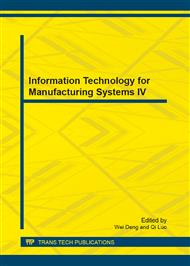p.329
p.334
p.337
p.342
p.349
p.354
p.359
p.364
p.369
Study on Mechanism of Seepage Flow of S/P Flooding Fluid
Abstract:
Because plenty of polymers have been added in the surfactant/polymer (S/P) flooding fluid, its viscosity becomes higher. So when S/P flooding fluid flows in the stratum, its threshold pressure gradient is an important influence factor. According to study S/P flooding fluid with different viscosities that flows in different permeability cores, the variation laws of seepage curve have been obtained. The results of the study show that the seepage of S/P flooding exhibits nonlinear seepage in low velocity, and changes gradually to linear flow as the pressure gradient rises. As well, S/P flooding has obvious threshold pressure gradient when its speed is low. The threshold pressure gradient of S/P is related to the permeability of the core and its own viscosity. The higher the viscosity, the lower the permeability of the core, the threshold pressure gradient will be greater.
Info:
Periodical:
Pages:
349-353
Citation:
Online since:
September 2013
Authors:
Price:
Сopyright:
© 2013 Trans Tech Publications Ltd. All Rights Reserved
Share:
Citation:


